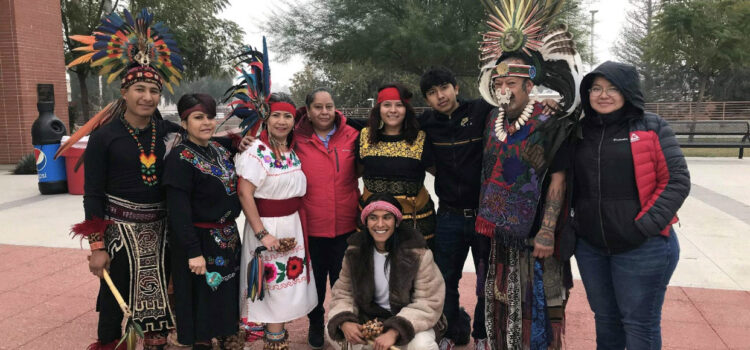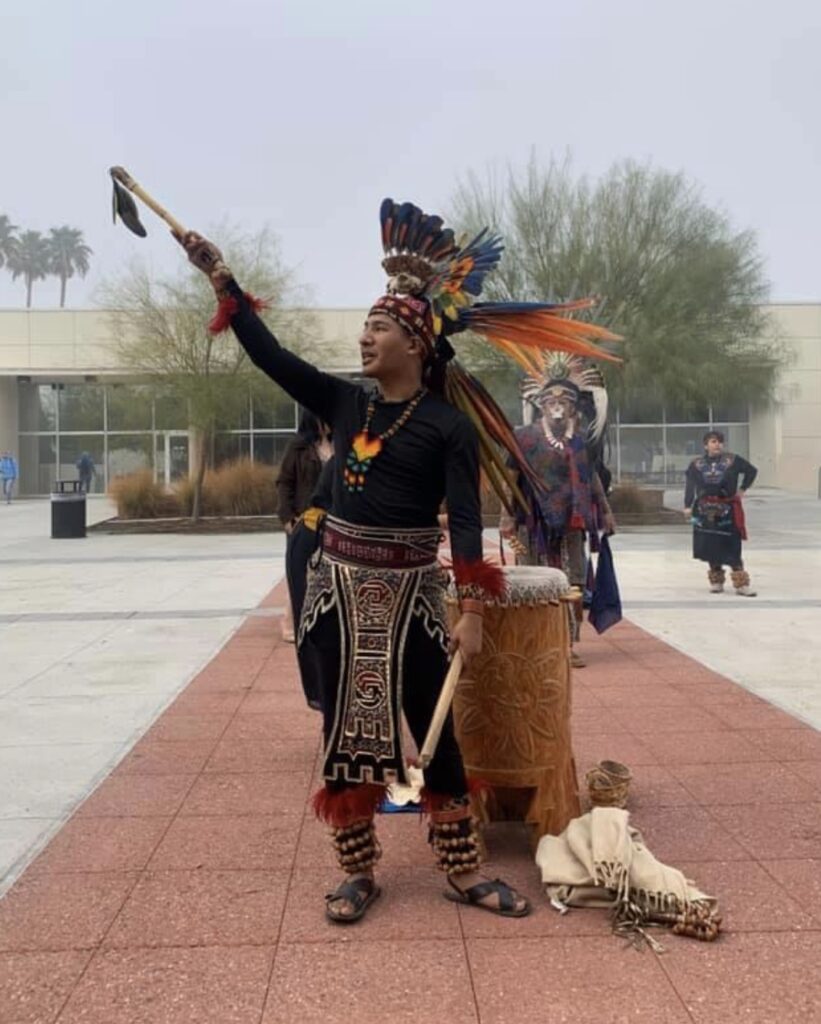
Dancing to the rhythm of the HueHuetl drums in a circle-shaped set up, while wearing a headpiece covered in diverse and colorful bird feathers, is the way Aztec Dance culture is preserved.
The culture of Aztec dancing originated from Mexico’s indigenous tribes. While speculation has surfaced of Aztec people dancing for enjoyment, historians have identified it as a ritual for the sake of survival.
Aside from the sacrifices, Aztec indigenous groups performed to honor their deities. They also celebrated by dancing to amuse Huitzilopochtli, the god of sun and war, to provide them with the forthcoming essentials like food, water and daylight.
Inspired by the rich culture and his biological ethnic origins, Jael Rivera is the leader of Calpulli Teopan Tecuantitlan, a local Aztec dance group with a mission to unite the community and conserve the ancient traditions.

Photo Courtesy of Marivel Servin
Rivera’s passion for Aztec dancing as more than a hobby.
“I tried sports and martial arts but didn’t make a connection,” he said. “I started to read books about my culture, and when the danza came in I took it as an opportunity to express what I enjoy.”
When he was an 11-year-old boy, his native background called to him to practice his ethnic Mixtec culture at a spiritual level. Out of all his family members, including his dad who speaks the Mixtecan language, Rivera found a great deal of interest to fully embrace the culture into his life.
Being committed to the culture, Rivera symbolically defined each artifact used to perform the rehearsed dances. Calpulli Teopan Tecuantitlan performs wherever they are hired to present, having made some appearances at the main Bakersfield College campus.
The first of the four essential components is El Traje, or cultural costume, left to the creative design of the dancer who will wear it. Usually, the body costume has colors representing the dancer’s personality.
The Popoxcomitl is an incense holder, who cleanses and brings peace throughout the performance. The name of this artifact references the Popocatepetl volcano situated in Mexico.
The HueHuetl drums are referred to as “grandfather.” Rivera explained the significance of “grandfather” as maintaining silence when the drums are played to have the ability to listen to the wise spiritual ancestors.
The Penacho is a headpiece crafted of different types of bird feathers, habitually from the macaw. In the past, the more exuberant feathers the Penacho had the wealthier the person was. Today, this headpiece is only used to represent the culture.
An Aztec dance performance requires the physical and spiritual collaboration of all dance members. Edith Mata, a learning student of Rivera, has found Aztec dancing to be more than a pastime.
“Aztec dancing has brought me tranquility, finding myself to be less angry than before. It has helped me heal and taught me how to find peace,” Mata said.
Although Mata is disheartened with the suspension of danza rehearsals due to the COVID-19 quarantine, she looks forward to returning with her fellow dance colleagues and dancing for the community.
For those who would like to get involved in Aztec dancing, Rivera advises that in order for a culture to be adopted, one must be actively practicing the culture.
On a regular basis, Calpulli Teopan Tecuantitlan is open to the community in Salon Juarez Dance Hall, located on 815 E. 18th St., every Monday and Friday from 6:30-8:30 p.m.
Featured photo: Courtesy of Lizbeth Mata, photo from a performance at Bakersfield College
Kern Sol News is a nonprofit news organization in Kern County. In addition to reporting stories that shed light on health and racial disparities in under-served communities across Kern, Kern Sol News also offers youth journalism training opportunities. For more stories by South Kern Sol, head to southkernsol.org.